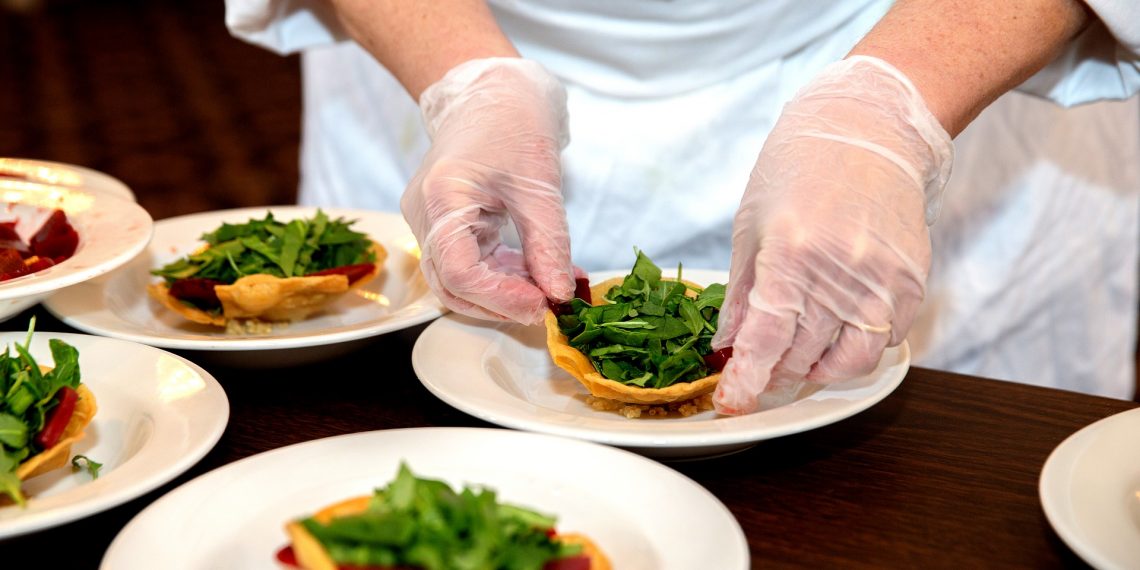Can pepperoni pizza help save the planet? Pizza Hut Restaurants is betting on it. One of the world’s biggest restaurant chains, the brand has added plant-based pepperoni — pepperphoni — to its menus in England, Wales and Scotland. The company sees this move as a way to give diners a delicious new option while reducing its carbon footprint.
Shifting diets away from so much beef, and toward more plants, is a win for the climate. Producing beef requires 20 times more land and emits 20 times more greenhouse gas emissions than producing common plant-based proteins.
Given that the average Brit spends around £1000, or $1300, dining out per year, Pizza Hut and the rest of the food service sector are uniquely positioned to accelerate this shift toward more sustainable diets.
Flavorful and appetizing products like plant-based pepperoni are a great way to help people eat less meat and more vegetables. How products are displayed, the language used to describe them, and other tactics matter, too. To help food companies nudge their diners to make sustainable choices, WRI has released a playbook outlining the top 23 behavior change strategies the food service sector can use to support diners in choosing plant-rich meals. These strategies draw on cutting-edge academic research into how people choose food, as well as insights from experts in the food service industry.
The 23 strategies are organized into five simple categories:
1. Product
Product strategies involve modifying plant-rich meals to increase their appeal to diners, including offering a greater variety of plant-rich dishes, adapting existing recipes to reduce the meat content, adding better tasting and visually appealing plant-rich options, or making changes to food packaging and plate garnishes. Pizza Hut’s new pepperphoni, and other plant-based pizzas the company has offered since 2017, fall into this category. The University of Cambridge’s updated menu is another example. When the number of vegetarian options was doubled in three university cafés, vegetarian dish sales increased by 70%, and meat sales decreased.

2. Placement
Placement strategies consider ways to modify food displays to encourage diners to select more plant-rich dishes from buffets or in self-service dining environments. This category involves putting plant-rich options first, and giving them more prominence or space compared to the meat dishes on offer. Simple changes to food placement can dramatically increase sales. For example, Seattle Pacific University doubled the size of its plant-rich food station and rebranded it as “Avant Garden” to also appeal to meat eaters. In the semester following these changes, sales from the station increased by 9%.

3. Presentation
Presentation strategies outline ways to re-engineer food menus to entice diners away from meat options. Examples include using more appealing language to describe plant-rich dishes, re-ordering lists or highlighting plant-rich dishes on menus. For example, when Panera Bread changed the name of its “Low Fat Vegetarian Black Bean Soup” to “Cuban Black Bean Soup” in trial markets, sales jumped by 13%, again demonstrating that relatively easy changes can have a big impact.

4. Promotion
Promotion strategies focus on how to optimize the pricing and marketing of plant-rich meals. This includes offering meat dishes at a surcharge, crediting diners with loyalty card points to spend on plant-rich items, providing free samples or selectively promoting plant-rich options. At a school in Vermont, for example, students who were offered a free tasting of vegetable stew chose that stew 8% more often after the tasting trial than they had the month before the trial started.

5. People
People strategies engage food service staff, including servers and chefs, to influence diners’ choices. Good examples include staff recommending that diners opt for plant-rich dishes, training staff on the benefits of plant-rich cuisine and ensuring access to the right infrastructure and ingredients to create the types of dishes that appeal to diners. When Hilton ran a campaign called “10 Days of Burger” that used video clips to educate their chefs on how to make a reduced meat burger with mushrooms blended into the beef, staff reported a lot more energy in the hotels and excitement around this creative opportunity. Hilton now offers the blended burger on menus across the world.

“Eat your vegetables” is no longer a phrase that diners should fear. With this playbook, food service providers now have a comprehensive, single source of inspiration and ideas for how to successfully offer sustainable food that diners really want to buy.



